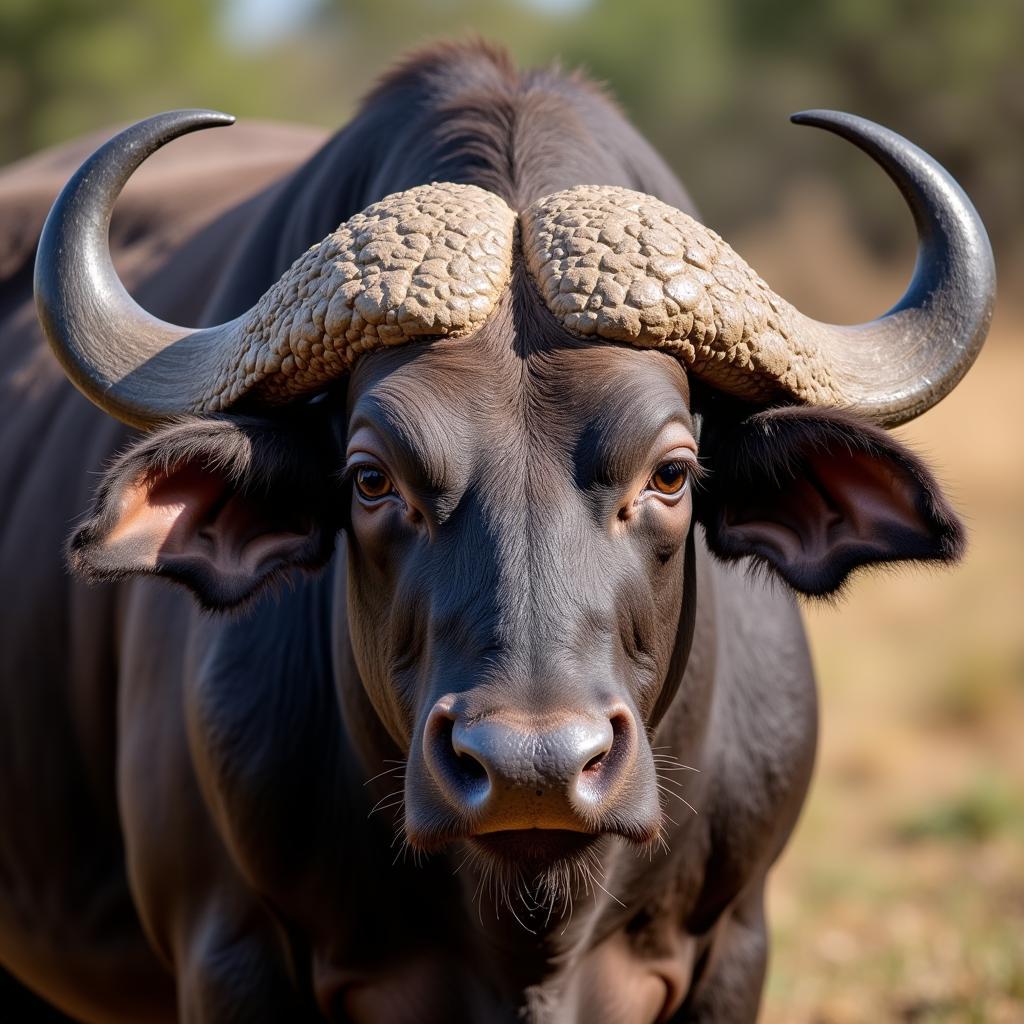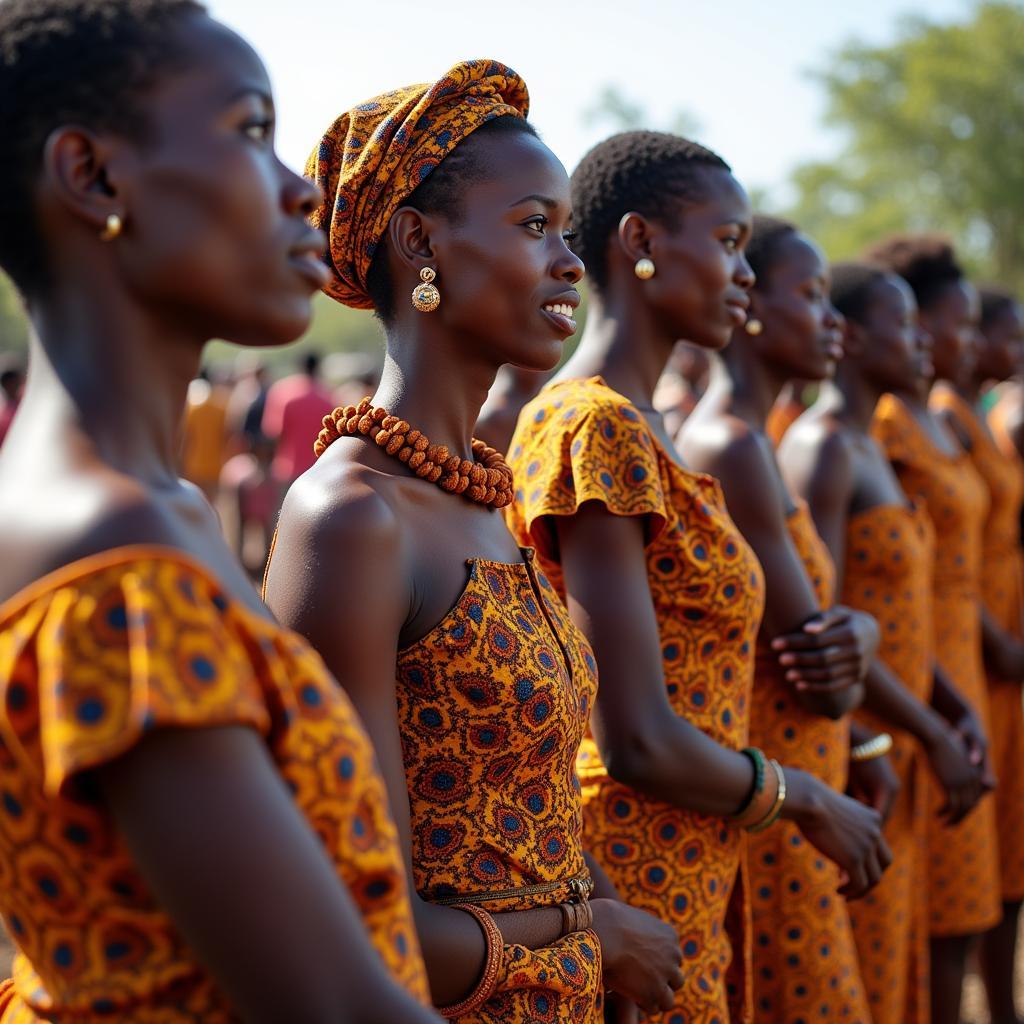Exploring the Majestic African Jungle Trees
The African jungle, a realm of vibrant biodiversity, boasts a breathtaking array of trees, each playing a crucial role in the ecosystem. African Jungle Trees are not just silent giants; they are the lifeblood of the jungle, providing shelter, food, and medicine for countless creatures. Let’s delve into the fascinating world of these arboreal wonders and discover their significance.
The Diversity of African Jungle Trees: A Botanical Tapestry
From towering hardwoods to delicate flowering species, African jungle trees display a remarkable diversity. This variety is influenced by factors such as climate, altitude, and soil composition, creating distinct forest types across the continent. These forests range from the dense rainforests of the Congo Basin to the more open woodlands of the savanna. This diversity is not just visually stunning; it also supports a complex web of life.
Identifying Key Species: Recognizing the Giants
Several iconic tree species dominate the African jungle landscape. The African mahogany, with its rich, reddish-brown wood, is prized for its durability and beauty. The towering kapok tree, with its buttress roots and smooth bark, provides a home for various animals. And the strangler fig, with its unique growth habit, begins life high in the canopy, gradually sending roots down to the forest floor, eventually enveloping its host tree. These are just a few examples of the incredible adaptations found among African jungle trees.
The availability of resources like sunlight and water heavily influences the structure and composition of the forest. For instance, in dense rainforests, the competition for sunlight leads to the development of a multi-layered canopy. Learn more about African animals in their natural habitat.
The Ecological Importance of African Jungle Trees: Pillars of Life
African jungle trees are essential for maintaining the health of the planet. They absorb carbon dioxide from the atmosphere, mitigating the effects of climate change. They also regulate water cycles, preventing soil erosion, and providing habitat for a vast array of species. From insects and birds to primates and large mammals, the jungle’s trees offer food, shelter, and breeding grounds. Without these vital trees, the delicate balance of the jungle ecosystem would be disrupted.
Curious about the habitats of some of the jungle’s most iconic inhabitants? Explore the African gorilla habitat.
Threats and Conservation Efforts: Protecting Our Green Heritage
Unfortunately, African jungle trees face numerous threats, including deforestation, logging, and agricultural expansion. These activities not only destroy vital habitats but also contribute to climate change. Thankfully, numerous organizations and local communities are working tirelessly to protect these precious ecosystems. Sustainable forestry practices, reforestation projects, and community-based conservation initiatives are crucial for ensuring the survival of these magnificent trees for generations to come.
For a lighter look at the jungle, you might enjoy some resources for kids. Discover the fascinating African jungle for kids.
Conclusion: Appreciating the Majesty of African Jungle Trees
African jungle trees are more than just components of a landscape; they are integral parts of a complex and interconnected ecosystem. Their diversity, ecological importance, and the threats they face highlight the urgent need for conservation. By understanding and appreciating the majesty of these arboreal wonders, we can all contribute to their protection and ensure the health of our planet. Remember, the future of African jungle trees, and indeed the planet, depends on our collective efforts.
FAQ:
- What is the tallest tree in the African jungle? While specific heights vary, emergent trees like the African mahogany can reach impressive heights.
- How do African jungle trees adapt to the climate? Many trees have developed adaptations such as drought resistance and specialized root systems.
- What is the economic importance of African jungle trees? They provide timber, medicinal plants, and support livelihoods through tourism.
- What are the main threats to African jungle trees? Deforestation, logging, and agricultural expansion are the primary threats.
- How can I contribute to the conservation of African jungle trees? Support organizations involved in reforestation and sustainable forestry practices.
- What is the role of local communities in conservation? Local communities play a vital role in protecting forests through traditional knowledge and sustainable practices.
- What are some examples of sustainable forestry practices? Selective logging, replanting, and community-based forest management.
Need more information on African animals in their natural habitat? Explore the provided link for a deeper dive.
For further assistance, please contact us: Phone: +255768904061, Email: kaka.mag@gmail.com, or visit our office at Mbarali DC Mawindi, Kangaga, Tanzania. We have a 24/7 customer support team.




